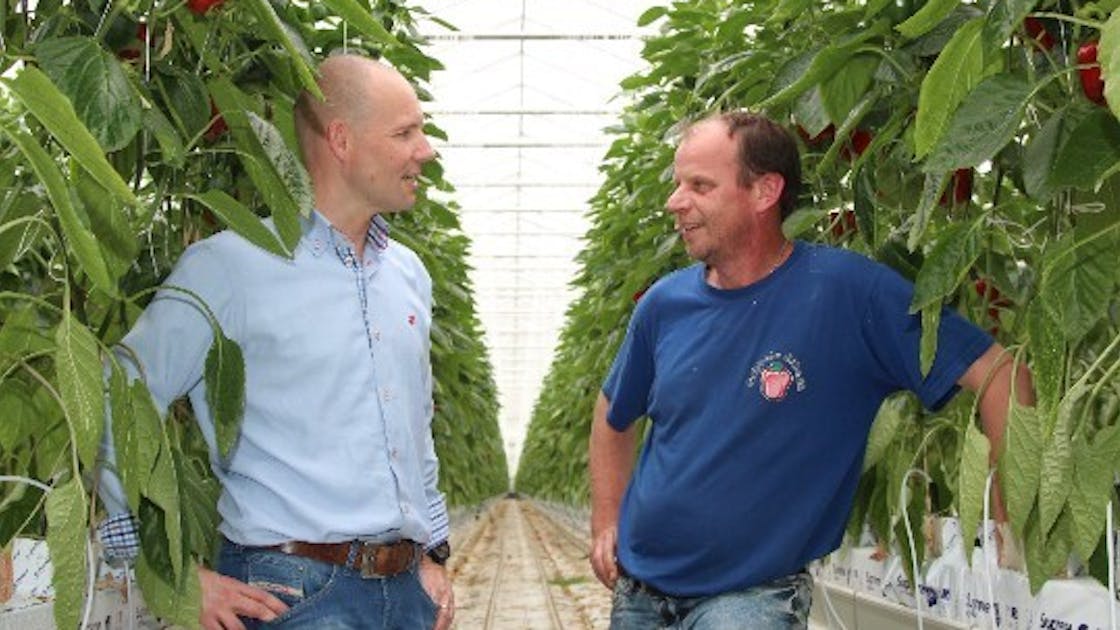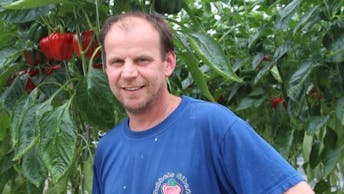"We make the greatest gains after midsummer"
At the Gubbels nursery, 25 hectares of sweet peppers are cultivated on Grodan Supreme stone wool slabs. This substrate, that was developed specifically for peppers, has more than proven itself in practice according to crop manager Geert Colbers. “The height of 10 cm makes it easier to steer the crops, particularly generatively. The roots are strong and healthy all year round with practically no plant mortality. That should deliver the greatest gains especially after midsummer.”
Gubbels in Maasbree was among the first companies eager to trial the special slab for sweet peppers back in 2015. At the time the trial involved six rows of plants, managed using the same regime as the rest of the crops. In 2016, the trial was extended to cover one irrigation section, and a year later it took up an entire eight-hectare greenhouse. Today, some 25 of the 29 hectares of peppers are planted in this top substrate which makes the perfect base for the 7.5 cm high Plantop NG2.0 propagation blocks.
“We see a great response from the crops every year”, Colbers explains to account manager Frank Janssen. “The plants root in really fast and have quicker initial growth. The extra height of the slab and wider steering range makes it easier to encourage generative growth than on a lower slab. Plants in Supreme always started to set a few days before the others, and, depending on the conditions, we could occasionally, but not always, harvest an extra fruit.”
Faster and more precise steering
Colbers believes the greatest gains can be made in the second part of the growing season. “After midsummer it normally takes quite some effort to keep the crops sufficiently generative”, he explains. “But it’s much easier on these new slabs. They can be steered faster and more precisely; the WC drops well at night but the substrate resaturates fast in the morning. Another positive of the slab is the narrower base compared with the GT Expert we used to use. The slabs are not such a snug fit in the gutter so the water can drain away quicker. It’s only a tiny detail, but every little helps on the road to better root zone management.”
Root development
Frank Janssen comments that the wide steering range and short response time are linked to the fibre technology used in the NG2.0. “Our latest generation of slabs and blocks offer an excellent capillary function, so the extra height is no problem at all”, he says. “The water content is distributed very uniformly through the substrate and that translates into healthy root development. When you cut open a slab you can see that the plant has colonised the total substrate volume and developed many finely branched, active roots. That remains unchanged until the end of the growing cycle. I can perfectly see why Geert is counting on a strong finish; other growers have similar experiences.”
Pushing the boundaries
Despite the wealth of experience Colbers has clocked up with the Supreme, he doesn’t think the end is in sight just yet. “Growing on a different type of substrate is always a multi-year learning curve. I expect to make even more improvements, especially now as we expanded the GroSens measuring system this year. The GroSens gives even greater insight into the root zone and makes pushing the boundaries of possibility more feasible. I mean, surely we can get a better performance from vigorous plants like these with such healthy roots?”. “The roots are strong and healthy all year round so there is practically no plant mortality”, says Geert Colbers (right) to Frank Janssen. “Plus, its easier to keep the plants generative.”






